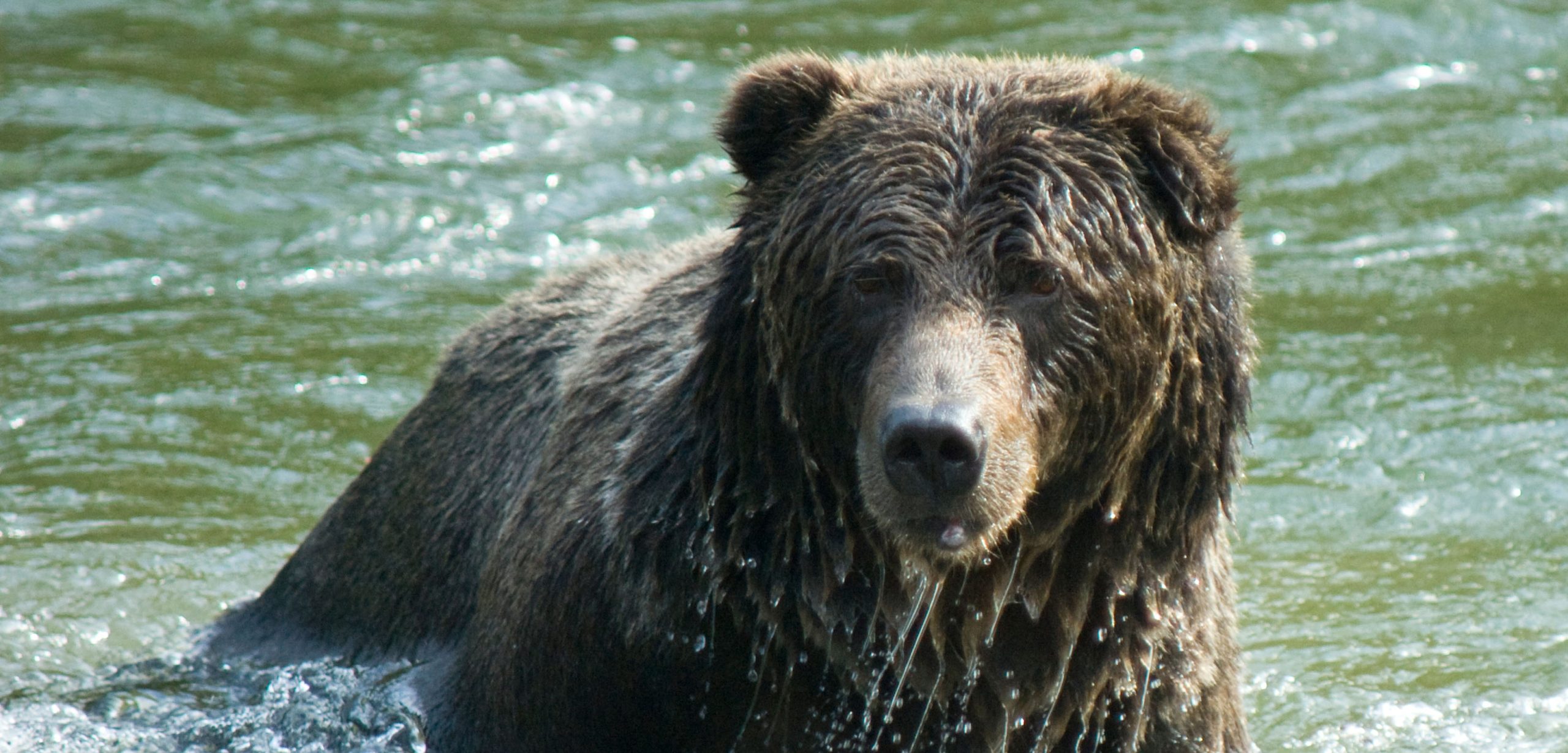Human-Grizzly Conflict Is Fueled by Desperation
Research shows that limited marine food supply drives bears into conflict with humans in British Columbia.
Article body copy
When Jason Moody started working as a coastal guardian at the Nuxalk Stewardship Office in Bella Coola, British Columbia, 15 years ago, he thought he’d be working with fisheries. After all, the Nuxalk Nation of Canada’s Great Bear Rainforest is highly reliant on salmon; without it, its future is at risk. But after only a few seasons in the remote valley town of 3,000 people, Moody felt his focus being pulled elsewhere. Lured ever closer to homes by discarded salmon guts and smokehouses, grizzly bears were frequently raiding locals’ fish tubs, where, as part of a local tradition, dead fish are kept in cool water outside until rigor mortis sets in. “I started seeing a real need for addressing the issue of bears,” Moody says.
That grizzly bears have been encroaching on Bella Coola isn’t surprising to Kyle Artelle, a Raincoast Conservation Foundation biologist studying grizzly bear-human conflict in British Columbia. Salmon, he says, are essentially “the perfect bear food”—they’re big, shiny packets of protein and fat, and their presence in town would be a powerful draw. Yet when it comes to conflict between grizzlies and people, it seems to be the abundance of salmon in the region’s waterways—not in town—that matters most.
In a new study, Artelle has shown how a limited marine food supply is the most important variable driving grizzly bear-human conflict across British Columbia. The abundance of salmon in the ocean is far more important than “problem individuals,” or too many bears in one place competing for food, he says.
(Artelle’s research is supported by a grant from the Tula Foundation, which also funds Hakai Magazine and the Hakai Institute. The magazine is editorially independent of the institute and foundation.)
By comparing conflict-killed bears and attacks on humans with patterns in timing, location, and the bears’ age, Artelle and his team were able to model how changes in the ecosystem may be affecting human-bear conflict in British Columbia. They found that for each 50 percent decrease in annual salmon biomass within a given area, the number of bears killed after a conflict with humans increases by an average of 20 percent.
“When animals are hungry, in general, they take more risks,” Artelle says. “Desperate times lead to desperate measures.”
This situation, where the depletion of a marine resource is driving terrestrial conflict, is a management nightmare—mostly because of jurisdictional wrangling.
In British Columbia, grizzly bears are the responsibility of the provincial government, whereas spawning salmon are overseen by the federal government. Though the province has the ability to euthanize grizzly bears, they have little say in managing the salmon. Wildlife managers have tried to reduce grizzly-human conflict by hunting and removing bears from the ecosystem. But according to Artelle’s research, removing bears doesn’t seem to reduce conflict. Ensuring there are enough salmon available for the bears to eat, however, could.
The abundance of salmon in the wild has some natural variation, but many Pacific populations have been impacted by industry in recent decades. Commercial fisheries can destroy spawning channels, while hatchery-raised salmon can reduce genetic diversity in wild populations. And some fishers have been overharvesting their stock, Moody says. He’s worried that with the number of salmon left in the ocean decreasing, conflict with bears could soon increase throughout the region.
In Bella Coola, Moody has been working with the Nuxalk people to minimize confrontations. When grizzlies empty residents’ fish tubs, Moody and his team go fishing to replace what was lost. They also set up electric fences and consult with homeowners, doing anything they can to stop people from blaming the bears.
But in the long run, Moody says it’s important that the federal government ensures that fishers leave enough salmon in the sea for the community—and for the bears.
Artelle is optimistic that such conflict could be curbed by Canada’s Policy for the Conservation of Wild Salmon, a program designed to place the conservation of salmon and their habitat as the first priority for resource management. But he notes that the policy, adopted in 2005, has yet to be implemented in tangible, on-the-ground ways.

